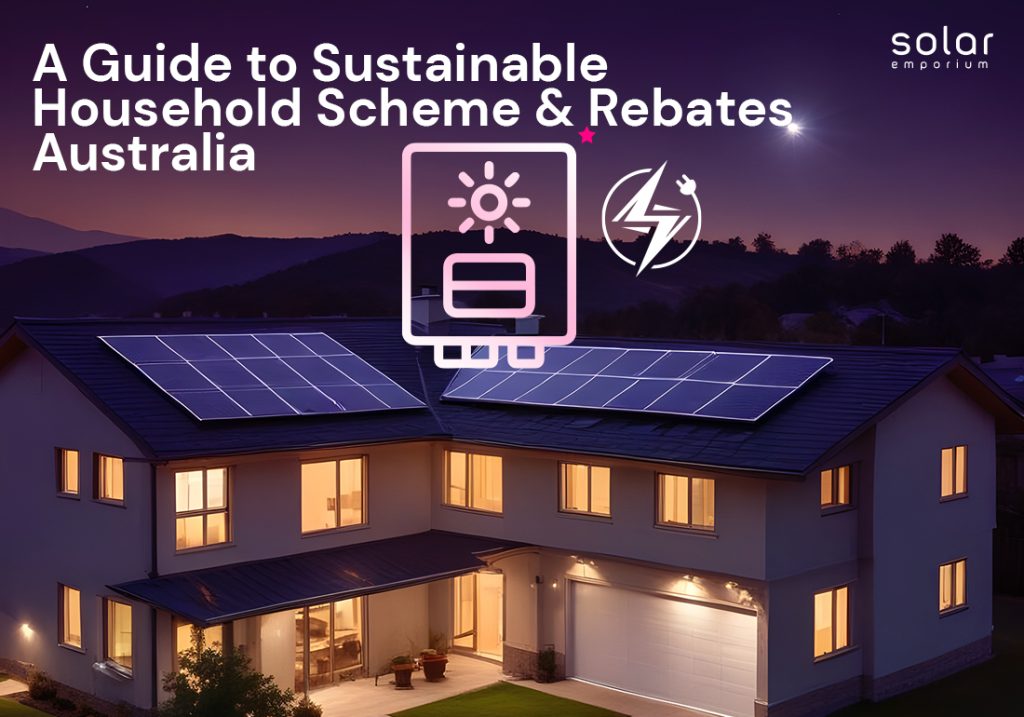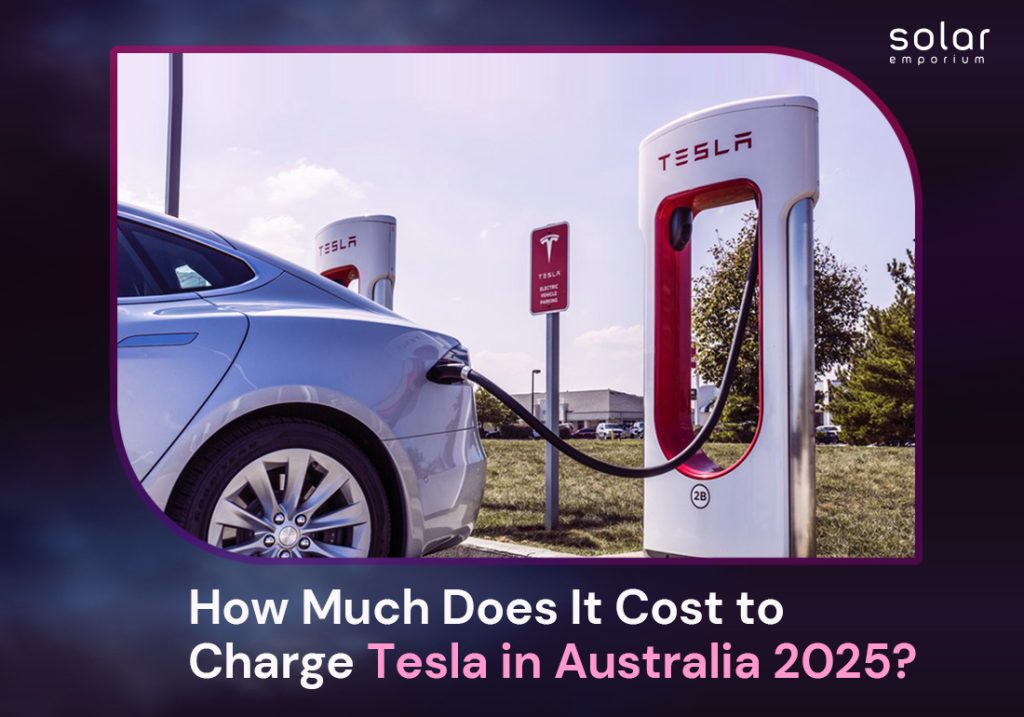Ready to invest in solar energy, but the high upfront cost is holding you back? We know it’s a common issue, but let us assure you that you’re not alone in this journey!
Many Australians face the same dilemma, where the dream of slashing energy bills and reducing carbon footprints feels out of reach due to the hefty price tag of solar systems. But what if there was a way to make that dream a reality?
In 2025, the Australian Government’s Solar Rebate could be your desired solution.
This groundbreaking initiative promises to ease the burden of costs, bringing clean, green energy closer than ever before.
Don’t let the price hold you back!
Read this comprehensive guide to discover how the Australian Government solar rebate works, why it’s important, and whether you are eligible.
In this blog post:
- Unlocking Savings| What is the Australian Government Solar Rebate?
- Is Australian Solar Rebate A Must Have for Australians?
- Australian Government Solar Rebate 2025: Top Features That Will Save You Money!
- National Initiatives: The Small-Scale Renewable Energy Scheme (SRES)
- State-Specific Rebate Programs in 2025
- Does Government Rebate Impact Solar Adoption Rate in Australia?
- Let’s Discover How Much You Can Save with the Solar Rebate in 2025
- Are You Eligible for the Government Solar Rebate 2025? Find Out!
- How to Claim the Solar Rebate: Solar Emporium’s Complete Application Guide
- The Future of Solar in Australia| What Comes After 2025?
Unlocking Savings| What is the Australian Government Solar Rebate?
Australians are highly aware of the environmental impact due to burning fossil fuels for energy production. Many people are slowly moving from coal to solar power as a cleaner, more sustainable alternative.
But there comes the biggest barrier to this sustainable energy transition: The Cost!
Therefore, to facilitate this transition, the Australian Government has introduced the Solar Rebate Program. These rebate programs are professionally designed to make solar energy affordable and widely available in Australian landscapes.
The small-scale Renewable Energy Scheme (SRES) under the solar rebate program offers financial incentives to reduce the high upfront costs of solar panel installations.
Moreover, the good part is that both residential and small business properties can avail themselves of this opportunity to lower their reliance on traditional energy sources.
Interested to know more about it? Keep reading the following sections!
Is Australian Solar Rebate A Must Have for Australians?
From combating climate change to meeting Australia’s renewable energy target, energy transition can play a critical role in shaping the future of sustainable energy.
According to the Australian Energy Regulator (AER), the country aims for 50% renewable energy by 2030 and to achieve net zero emissions by 2050.
Embracing solar energy in Australia leads to substantial savings on energy bills. For businesses, adopting solar power not only lowers operational costs but also helps meet sustainability goals and enhance their brand reputation.
Incorporating solar panels on your home’s rooftop or carport can reduce your household’s carbon emissions, enhance energy security and promote sustainability.
With so many benefits of solar energy, don’t you think it’s high time for Australians to install solar panels? Definitely yes!
But if you are still sitting on the fence and worried about cost and other expenses, then this solar rebate is a must-have for you.
Through this financial aid, you can easily switch to solar energy, contributing more to a green, sustainable future for Australia. These rebates make solar energy financially accessible for all, including low-income households.
Finally, with the 2025 Solar Rebate Program just around the corner, it’s essential to understand how it works, the benefits, and the eligibility criteria.
So, let’s have a more detailed picture.
How Does the Solar Rebate Work in 2025?
The Solar Rebate program is based on Small-Scale Technology Certificates (STCs), which are awarded to those who install solar systems from a proper CEC-accredited installer.
The number of STCs you can claim depends on several factors, namely:
- The year of installation. STC values gradually decrease over time, thus reducing the rebate amount.
- Your geographical location as solar energy generation varies depending on weather and seasons.
However, each STC represents a financial incentive, so you don’t have to worry. Contact your installer; they will typically manage the process of claiming these certificates on behalf of you.
But remember, in many cases, the rebate is applied directly to the cost of the installation.
Australian Government Solar Rebate 2025: Top Features That Will Save You Money!

But here are some key features to keep in mind before going for rebates:
- Small-Scale Technology Certificates (STCs) can be traded for a cash rebate or a discount from the installer.
- To pass the eligibility test, your property must meet certain requirements, including the size of the system being installed and the location of your home or business.
- While primarily aimed at residential properties, the rebate is also available to small businesses, which are often under pressure and struggle to reduce their energy bills.
- The rebate will be lower in 2025 than in previous years, but it will still offer substantial savings.
- The rebate amount is designed to decrease over time as more people adopt solar technology. It’s going to be phased out and will completely end in 2030.
National Initiatives: The Small-Scale Renewable Energy Scheme (SRES)
From the above, you already know that the SRES offers significant cost savings for those adopting solar and other renewable technologies.
It can cover a substantial portion of the system’s initial cost, which makes it more affordable for consumers to invest in green energy solutions.
Eager to know the number of STCs you are eligible to receive and how much money you can save? Here’s a simpler way:
STC Calculation Formula:
The basic formula to calculate the number of STCs is:
STCs = System Size (kW) * Deeming Period (Years)
- System Size: Total capacity of your system in kilowatts (kW).
- Deeming Period: This is the number of years the system is expected to produce renewable energy. For solar systems, this is typically 15 years, but it can vary.
Let’s say you want to install a 5kW solar system at your home.
- System Size: 5 kW
- Deeming Period: 15 years (this is standard for solar systems)
Step 1: Multiply the system size by the deeming period:
STCs = 5 kW * 15 years = 75 STCs
So, for a 5kW solar system, you would be eligible to receive 75 STCs.
Value of STCs:
The value of STCs can vary as they are bought and sold on the open market. Typically, you can sell them to energy companies or other buyers. Keep in mind that the price per certificate fluctuates.
Let’s assume the current market price for STCs is around $35 per STC (prices can vary).
Step 2: Multiply the number of STCs by the market price:
Savings = 75 STCs * $35 = $2,625
So, if you installed a 5kW solar system, you could potentially save $2,625 on the upfront cost of your system by selling the 75 STCs.
State-Specific Rebate Programs in 2025
Along with federal incentives, residents from several states in Australia have also introduced their own state-based rebate programs to promote solar energy adoption.
This dramatically raises the solar penetration rate throughout Australia.
So, let’s see what rebates they are offering and how they are managing them efficiently:
- New South Wales (NSW)
- Empowering Homes Program:
This empowering home program offers interest-free loans up to $14,000 for the installation of solar PV. Additionally, it provides funding of up to $9,000 for battery system upgrades under NSW Solar Rebate 2025.
- Victoria (VIC)
- Solar Homes Program:
This government rebate program provides financial aid to eligible homeowners that cover up to 50% of the cost of solar panel systems, solar hot water systems, or solar batteries.
- South Australia (SA)
- Home Battery Scheme:
This program allows subsidies for households to install battery storage systems, with subsidy amounts based on household income and battery capacity.
- Energy Efficiency Grants for Small Businesses:
Offers grants between $2,500 and $50,000 to eligible small businesses for investments in energy-saving technologies, including solar panels and battery storage.
- Queensland (QLD)
- Solar for Rentals Program:
Provides rebates for landlords installing solar systems in rental properties, aiming to reduce energy costs for tenants.
- Western Australia (WA)
- Solar Battery Rebate:
Offers rebates of up to $5,000 for households installing solar battery systems, aiming to increase energy independence and storage.
- Australian Capital Territory (ACT)
- Sustainable Household Scheme:
Provides interest-free loans up to $15,000 for eligible households to invest in solar power systems, batteries, and other energy-efficient improvements.
- Next-Gen Energy Storage Program:
The ACT government provides rebates of up to $825 per kilowatt-hour (kWh) of energy storage capacity, with a maximum of $4,500 per household.
Does Government Rebate Impact Solar Adoption Rate in Australia?

The solar rebate programs have been a significant initiative taken by the Australian government. These policies and schemes influenced solar adoption rates across Australia. The visible proof?
In the first half of 2024, 1.3 GW of rooftop solar capacity, comprising 141,364 units, was installed.
With nearly 4 million Aussie homes equipped with solar panels, the country already stands as a global leader in clean energy generation.
This brings Australia’s total rooftop solar capacity to approximately 25.7 GW by mid-2024. Notably, the average system size increased to 9.8 kW during this period, up from 7.4 kW five years prior, indicating a trend towards larger installations.
Let’s Discover How Much You Can Save with the Solar Rebate in 2025
The exact amount you can save through the Solar Rebate will vary based on your location, the size of the system you install, and the current value of STCs.
Though these amounts will fluctuate depending on the number of certificates available and the market price of STCs, we have shared an average saving you can expect.
So, here’s a general breakdown of the savings from your solar rebate system:
- Small Systems (Up to 3kW): The rebate can save an average of $1,000 to $1,500 on a 3kW solar system.
- Medium Systems (4kW – 6kW): A larger system can offer a rebate of approximately $2,000 to $4,000, depending on the installer’s pricing, your location and other factors
- Large Systems (6kW and above): Systems larger than 6kW may save upwards of $4,000, and if eligible for extra STCs, you could save even more.
These figures reflect the value of the STCs that can be claimed at the time of solar panel and battery installation.
Are You Eligible for the Government Solar Rebate 2025? Find Out!
Confused about whether you can access the incredible Government Solar Rebate in Australia?
Discover the important criteria you must meet to claim your share of this game-changing rebate’s benefit before it’s too late. Don’t miss your chance to save big!
- First, you must meet the requirements set by the Clean Energy Regulator (CER) to qualify for the rebate, available to both homeowners and small businesses.
- This rebate program is only open to approved solar systems that meet Australian standards and are installed by Clean Energy Council (CEC) accredited installers.
- The system must fall within the capacity range for the Small-scale Renewable Energy Scheme. Generally, systems up to 100kW for small businesses and 10kW for homes.
- Though the rebate is available nationwide, the size of the system and the number of STCs you’re eligible for will vary depending on your living location.
How to Claim the Solar Rebate: Solar Emporium’s Complete Application Guide
- Research and Find Expert Installers Look for reputable installers accredited by the Clean Energy Council who offer systems eligible for the rebate.
- Request Solar Quotes Get multiple free solar quotes to obtain the most competitive deal out of the market. Compare prices and see how much the rebate can reduce your upfront costs.
- Install the Panel System Once you have chosen your preferred installer and agreed on a quote, the system will be installed. The installer will typically handle the paperwork for the STC claim.
- Claim the Rebate There are two ways to claim your rebate. Either the installer will claim the STCs on your behalf or apply the rebate directly to your solar panel or battery installation costs.
- Enjoy the Benefits Once installed, your solar system will start generating power, lowering your energy bills and contributing to a cleaner environment.
The Future of Solar in Australia| What Comes After 2025?

Before parting ways, let’s share a vision of the future where Australia’s solar power leads a global revolution in clean energy.
With the government solar rebate by 2025, the true power of solar will unfold a new era of energy independence, innovation, and environmental responsibility.
Whether you’re looking to reduce your environmental impact, cut your energy costs, or both, the Solar Panel Rebate in 2025 is a fantastic opportunity.
So, what do you think?
Will Australia rise to meet its 100% renewable transition challenge and shape a sustainable world for generations to come?
Well, although only time can tell what will happen next, the horizon gleams with many promises due to financial aid, government support, and collaborative efforts. But be sure to act quickly, as the rebate amount is set to decrease over time.
For more informative content like this, keep your eyes on Solar Emporium.







